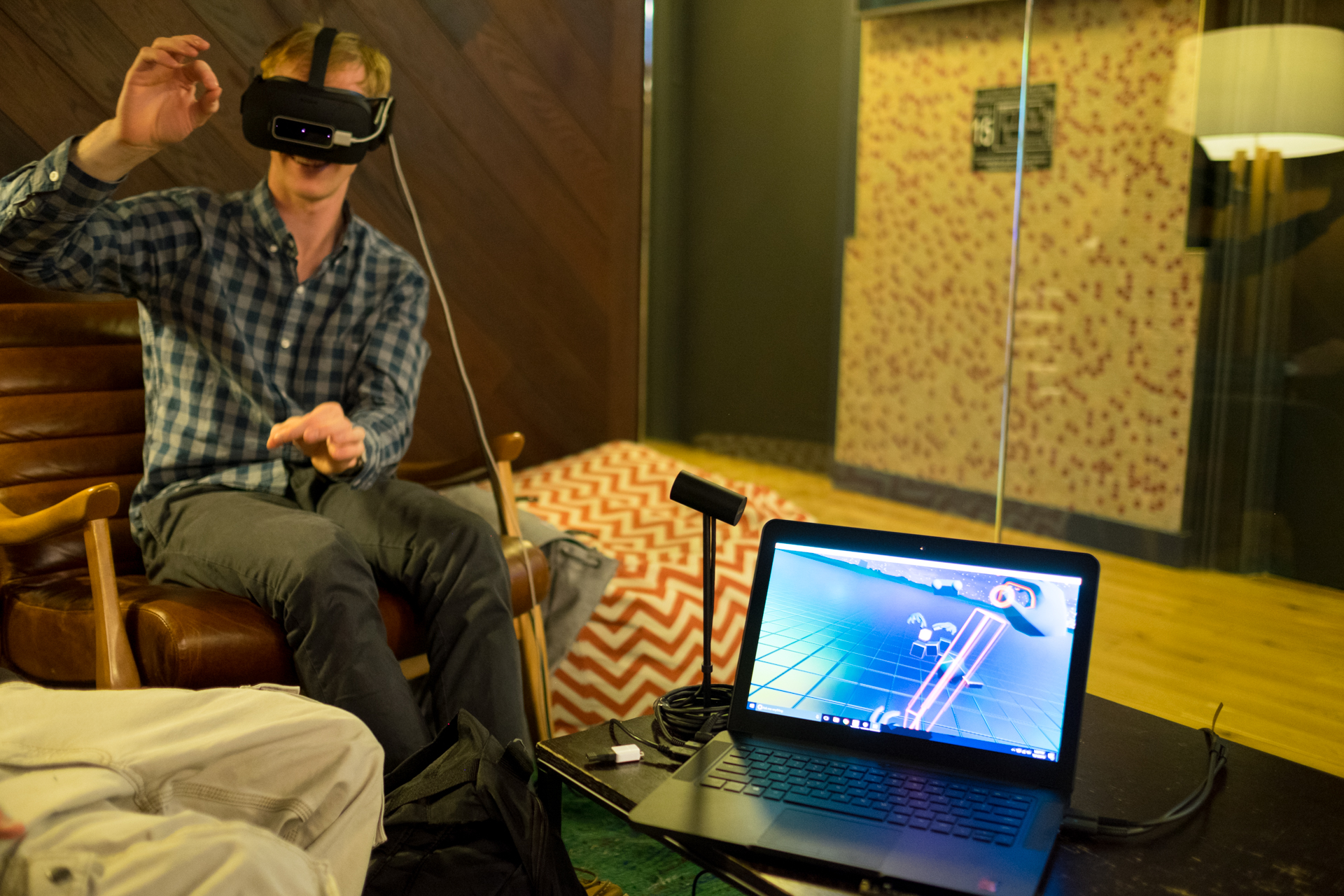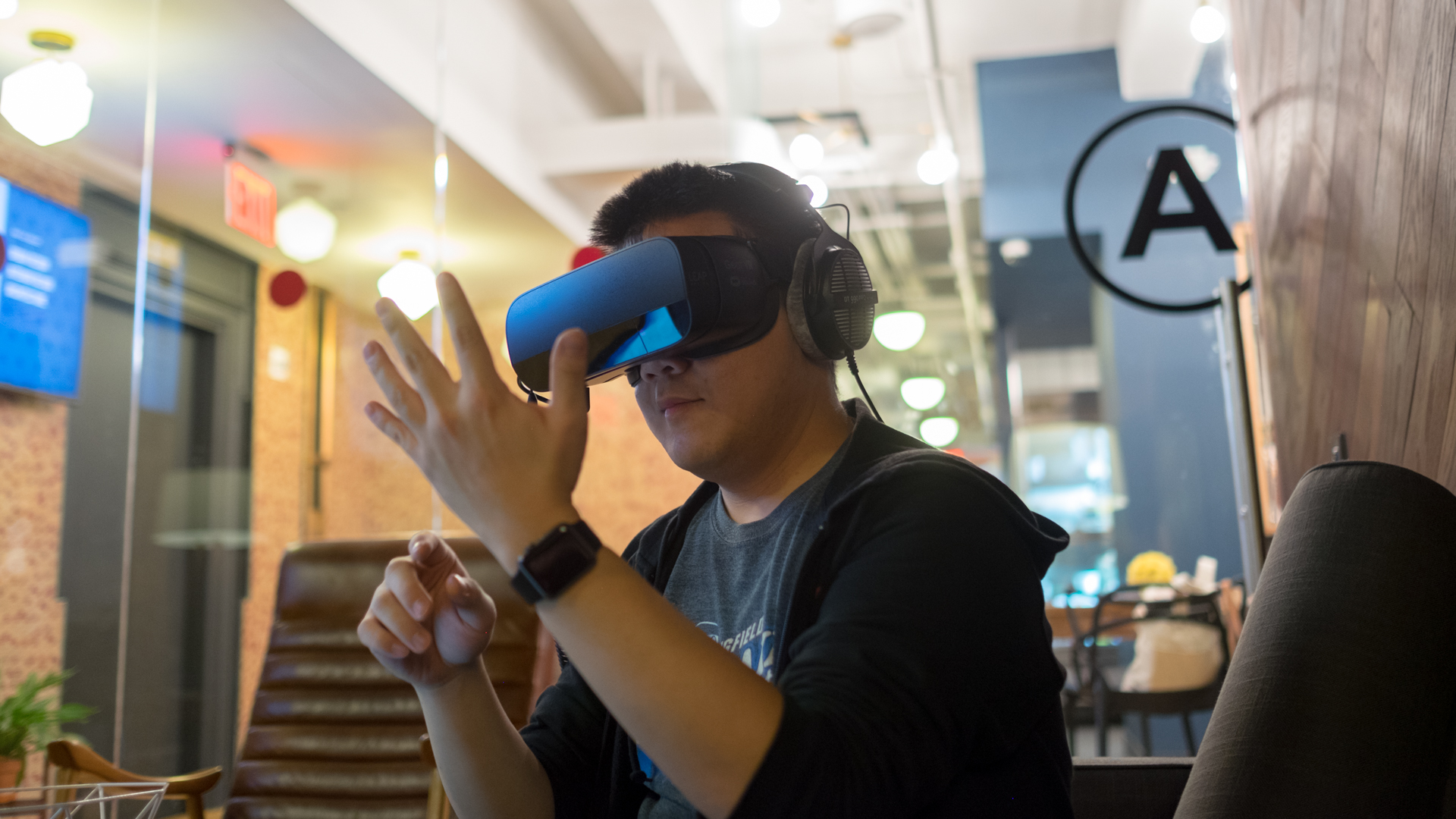Leap Motion hand-tracking comes to smartphones

Leap Motion is bringing the controller-free virtual reality it has established in the PC space to smartphones with a new mobile hand-tracking platform. The San Francisco based startup has announced a new mobile version of its hand embedded sensor as well as a new version of its Orion software.
The new sensor features a 180 x 180 degree field of view that’s much wider than the original model’s 140 x 120 field of view. What’s more, the sensor can also detect hand motion from a longer range for those with long arms and it’s been optimized to consume half as much energy.

On the software front, Leap Motion has also optimized Orion to deliver the same VR experience we’ve seen on PCs to mobile.
The company claims the software has been reinvented to run at nearly 10 times the speed to compensate for the lower processing power on smartphones. At the same time the software has been made to run smoother and more accurately than ever.

Leap Motion allowed us to try the new mobile sensor built into a modified Samsung Gear VR for a quick hands-on session. Aesthetically, the reference design doesn’t look too dissimilar from Samsung’s mobile VR device except for a little black window that runs across the bottom edge of the Gear VR.
Upon slipping on the goggles, however, our hands were immediately recognized and within seconds we began forming shapes in a simple simulation over a virtual sea. The speed of moving our hands to seeing the motion in VR felt like it was instantaneous, but without any weight or feedback to your actions, there is still a feeling of being detached from virtual reality.

That said, we quickly fell into the game of pinching our finger to make objects and skipping them across the virtual sea. Leap Motion also setup a local network, allowing us to play in the VR space with one of their spokespersons. In the future though this virtual reality co-op experience will be able to happen across the world as well as in the same room.
Sign up for breaking news, reviews, opinion, top tech deals, and more.
Unlike the first Leap Motion sensor, the company says it has no intentions to ship a standalone peripheral. Instead it aims to make its newest part an embedded sensor in VR headsets and it has already begun sampling the new integrated system to select headset makers around the world.
Starting this December, Leap Motion also will begin demoing this mobile experience at large public VR events in many major cities.
As Leap Motion sees it, mobile VR experiences have lagged behind larger wired systems without a compelling input. But with it hand-tracking sensor, Leap Motion wants to make VR more portable, affordable, and ultimately as natural and casual as any real physical interaction in our daily lives.
- Looking for the best virtual reality headset?

Kevin Lee was a former computing reporter at TechRadar. Kevin is now the SEO Updates Editor at IGN based in New York. He handles all of the best of tech buying guides while also dipping his hand in the entertainment and games evergreen content. Kevin has over eight years of experience in the tech and games publications with previous bylines at Polygon, PC World, and more. Outside of work, Kevin is major movie buff of cult and bad films. He also regularly plays flight & space sim and racing games. IRL he's a fan of archery, axe throwing, and board games.